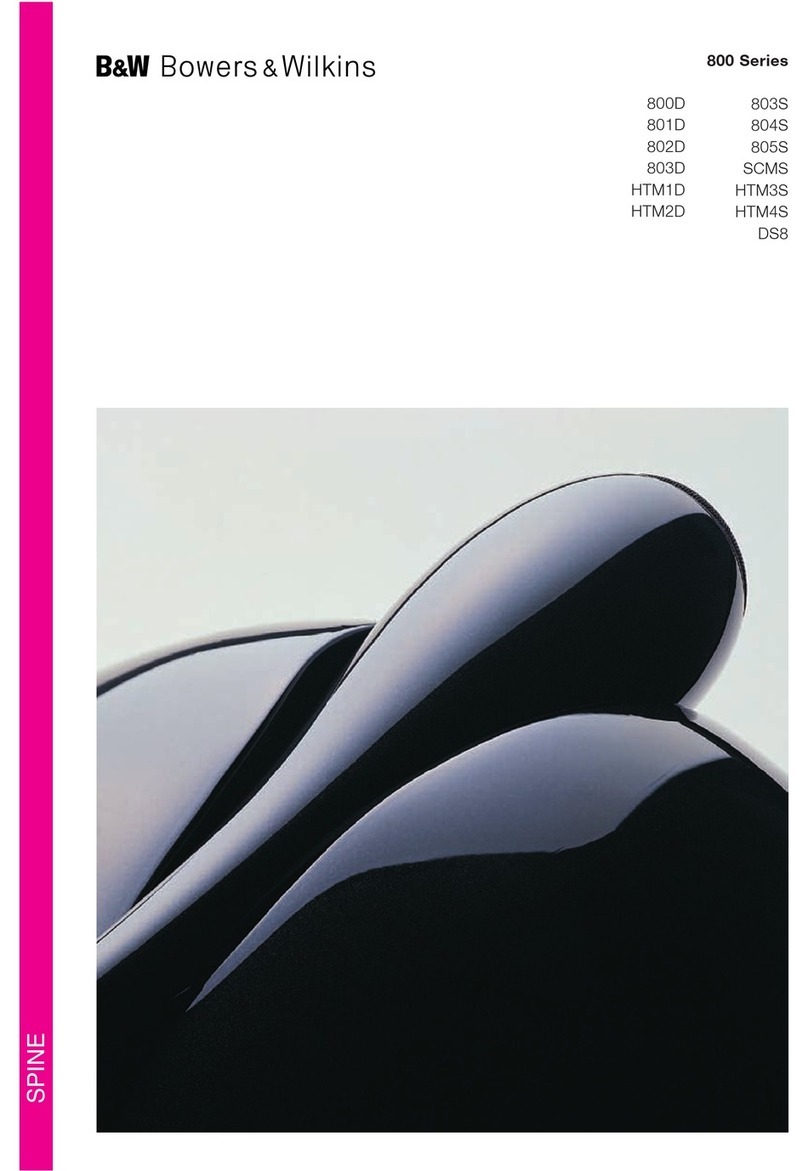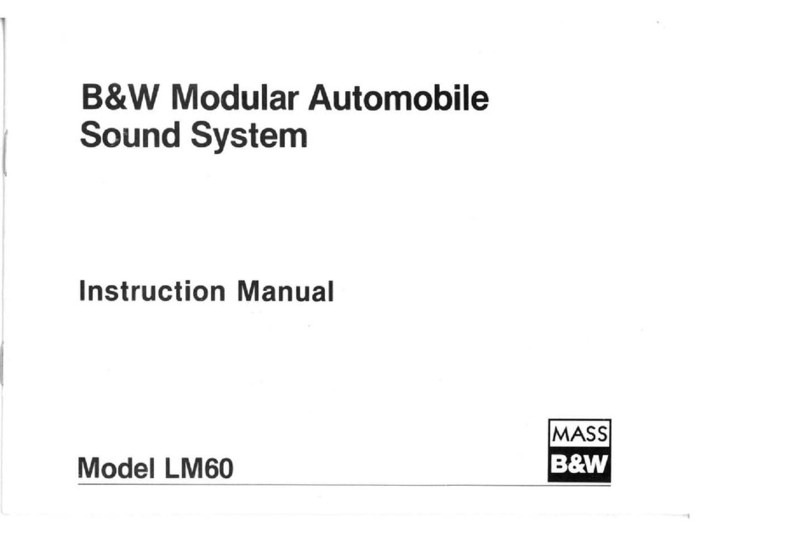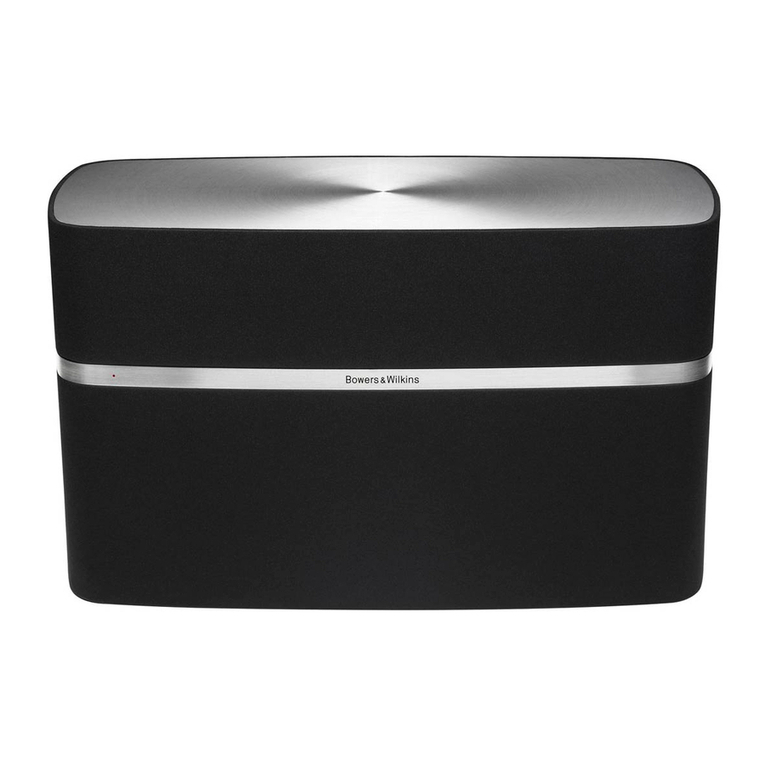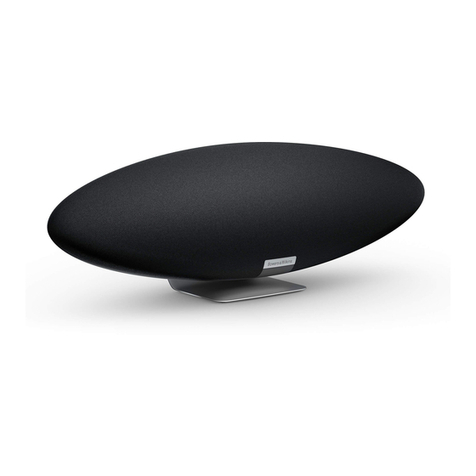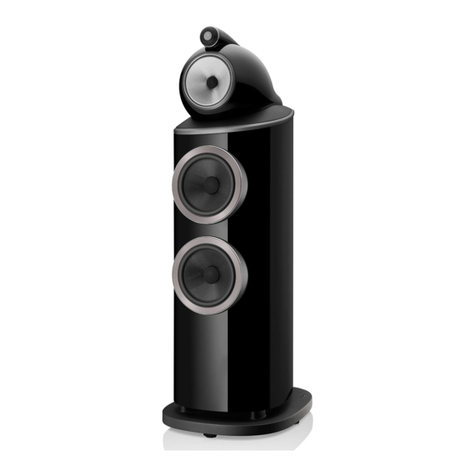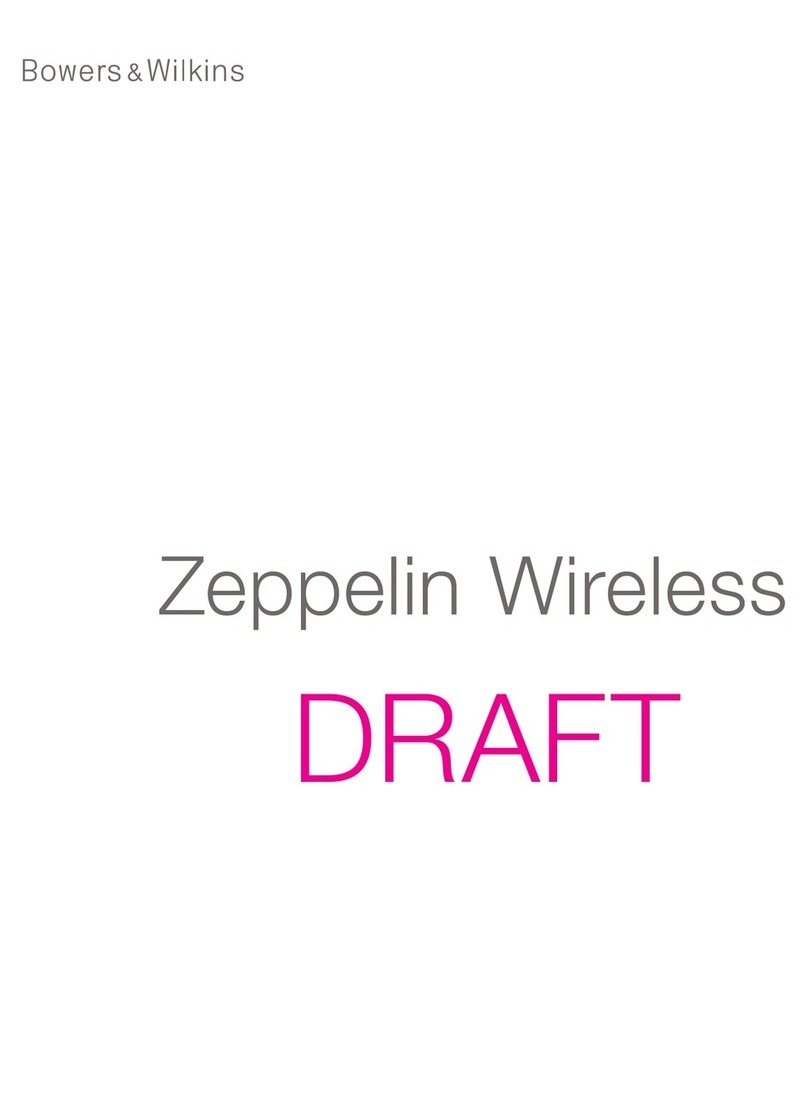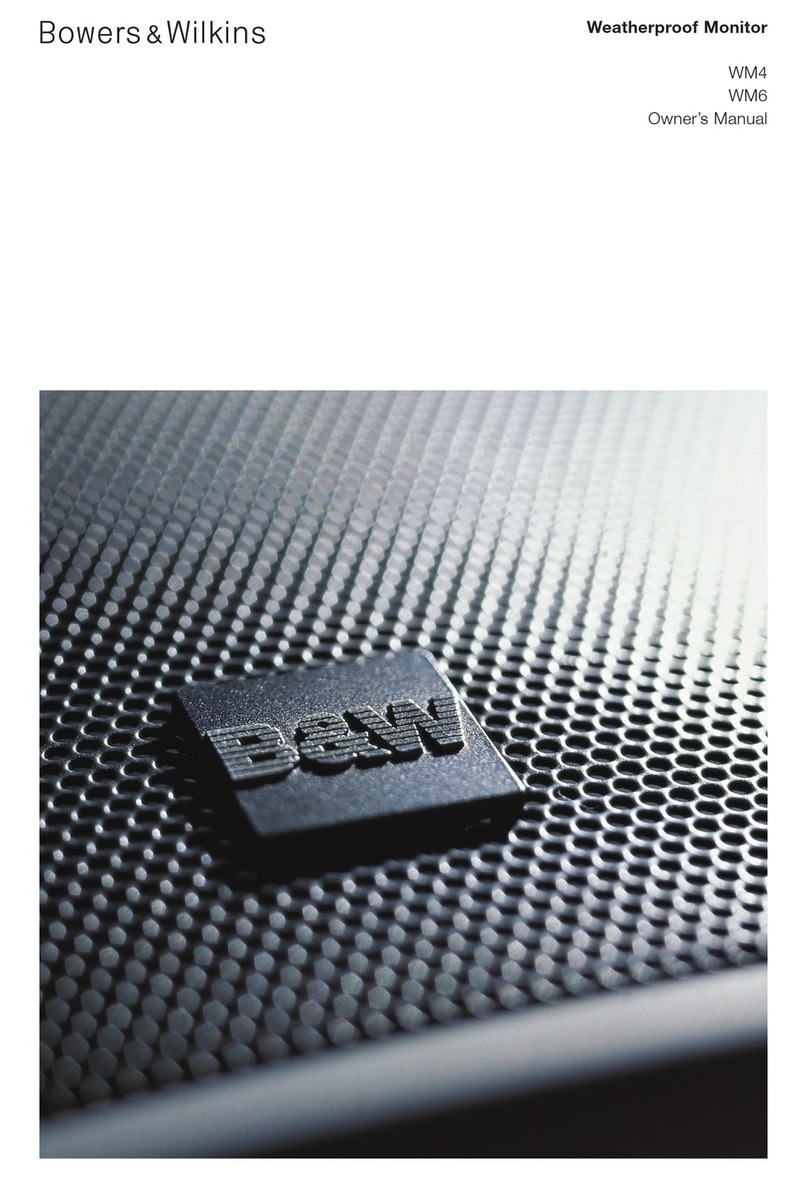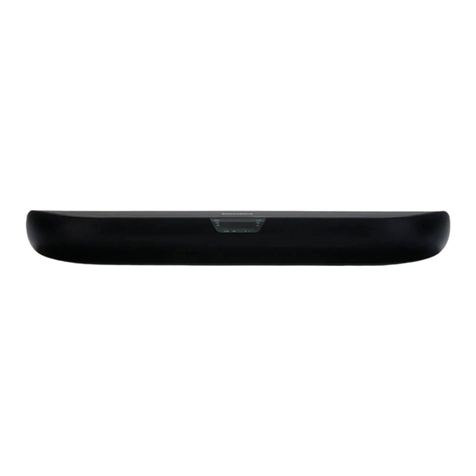6
• The analogue audio output from the TV is
connected to Panorama’s Input 5.
With this connection scheme the majority of audio
programme formats can be reproduced through selection
of the appropriate Panorama input. For example:
Input 1: Digital, 5.1 channel, DVD soundtracks.
Input 2: Digital audio from, or routed through, the TV.
Input 5: Analogue stereo audio (analogue TV audio or
Dolby Pro Logic surround encoded audio for example).
Note: Some televisions pass 5.1 channel digital audio
from their HDMI inputs to their digital audio outputs (the
remainder down-mix 5.1 signals to stereo). In these
cases, the direct connection between the DVD player
and Panorama’s Input 1 will not be necessary. Confirm
with the manufacturer of your TV that it is capable of
5.1 channel digital audio output from external inputs
before dispensing with the direct DVD to Panorama
connection.
Note: When using Panorama it may be necessary to
mute the television’s internal speakers. Some television
screens will display a permanent on-screen symbol
when mute is selected. If this is the case the television
volume can alternatively be reduced to zero using its
remote handset volume controls.
Note: For further information on connecting Panorama
to a wide variety of audio sources a Panorama
Connection Guide is available for download from the
B&W web site. www.bowers-wilkins.com
Use the digital optical cables supplied with Panorama to
connect the DVD player digital audio output and the TV
digital audio output to Input 1 and Input 2 respectively.
The caps must be removed from the ends of the digital
optical cables before it is used. Inputs 3 to 5 may be
used to connect a variety of audio sources such as
analogue TV, a CD player, an Apple Airport Express or a
personal audio device.
Note: If your DVD player does not have an optical digital
audio output, use the phono coaxial digital cable
supplied and connect to Panorama Input 3.
Panorama’s connection sockets are located on the
underside beneath a removable cover. To remove the
1. UNPACKING PANORAMA
Check that all parts are present in the carton. In
addition to the Panorama itself, you will find an
accessory box containing:
• Wall bracket
• Quick Start Guide
• This manual
• Warranty and registration documents
• Remote handset
• Power cord
• Stereo analogue phono signal cable
• 2 x optical digital signal cable
• Co-axial (phono) digital signal cable
• 4 x 25mm feet
• 4 x 35mm feet
• Micro-fibre polishing cloth.
In some markets, Panorama may be supplied with two
power cords. The one with a 3-pin plug on the end is
for use in the UK, Republic of Ireland and Hong Kong.
Follow the guidelines in the Quick Start Guide when
unpacking.
2. INSTALLING PANORAMA
2.1 Panorama Connections
Panorama requires connection to mains power and to
one or more digital or analogue audio sources.
Panorama offers a total of five audio inputs – three
digital and two analogue. The inputs are numbered as
follows:
Input 1: Digital optical
Input 2: Digital optical
Input 3: Digital RCA-phono
Input 4: Analogue RCA-phono
Input 5: Analogue RCA-phono
Figure 1 illustrates Panorama connected in a typical home
entertainment system including a television and a DVD
player. In this system the connection scheme is as follows:
• The digital audio output from the DVD player is
connected to Panorama’s Input 1.
• The digital audio output from the TV is connected
to Panorama’s Input 2.
Owner’s manual
Welcome
Thank you for purchasing Panorama and welcome to
Bowers & Wilkins.
Watching a movie in the home on a generous screen and
with great sound can be a breathtaking experience – often
better than in the theatre. But installing and wiring a home
theatre system is sometimes not quite so enjoyable. And
that’s where Panorama comes in. Panorama is an
integrated solution to home theatre sound that is as
simple to install as it is remarkable to experience. Rather
than require multiple speakers positioned around the
room, Panorama uses sophisticated digital signal
processing to steer the sound from one source and create
a genuine home theatre audio experience without the
complication of multiple speakers. But Panorama is not
only simple to install and use. Thanks to advanced
acoustic technology borrowed directly from our highest
performance hi-fi designs, it offers sound quality more
often associated with the best h-fi separates.
The Bowers & Wilkins Panorama Home Theatre
experience starts here. However, before you immerse
yourself in a great movie, please take a moment to read
through this manual, especially the safety instructions.
B&W maintains a network of dedicated distributors in
over 60 countries who will be able to help you should
you have any problems your dealer cannot resolve.
Overview
Panorama is a complete home theatre audio system
contained in one easily installed unit that can be wall or
table mounted. It incorporates a 5.1 channel home
theatre audio decoder along with front, centre, surround,
and subwoofer speakers and their drive amplifiers. An
additional active subwoofer can be connected and
Panorama will automatically detect its use and adjust its
own settings appropriately. Panorama incorporates three
digital and two analogue audio inputs for the connection
of audio sources such as DVD players and satellite
receivers. Panorama is controlled by an intuitive user
interface combined with a simple remote control handset.
